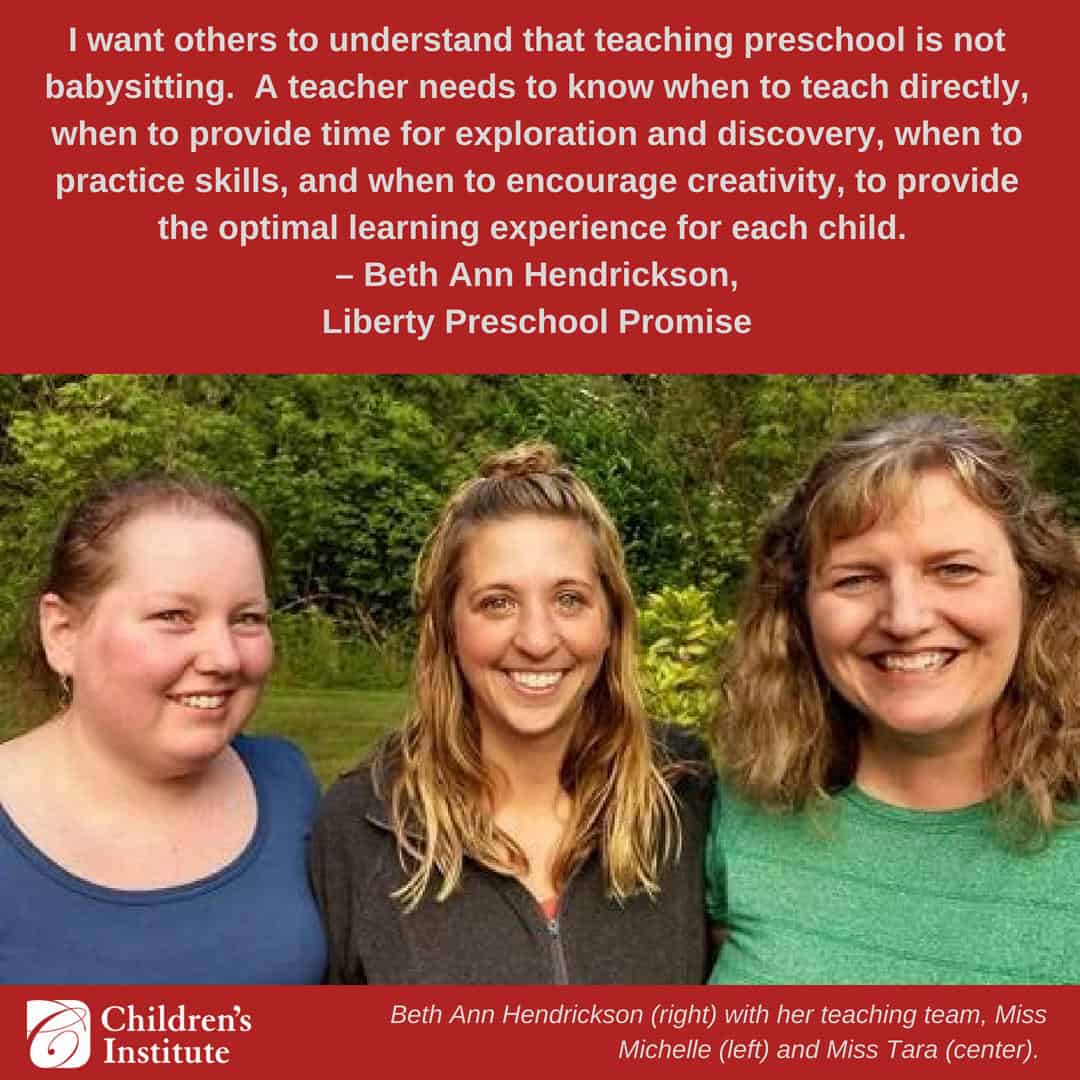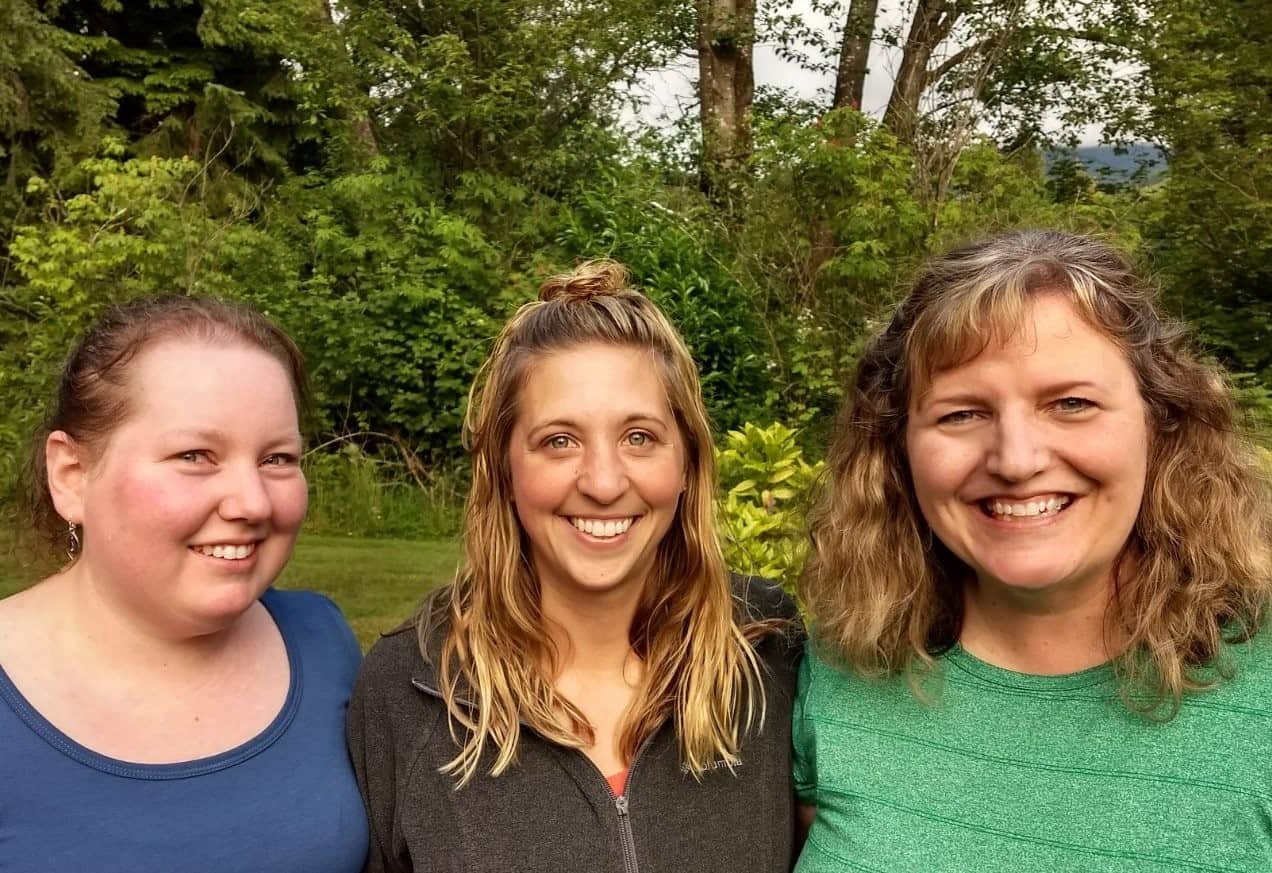
This summer Children’s Institute is highlighting the important work of early childhood educators teaching preschool through third grade. In this series of profiles, teachers from across the state tell us why they teach young children, what they wish people knew about their work, and what they’ve learned in their jobs.
Beth Ann Hendrickson Shares Her Life-Long Passion for Teaching
Beth Ann Hendrickson is a preschool teacher at Liberty Elementary School in the Tillamook School District. The school is a Preschool Promise site, serving 20 students. In this interview, Beth Ann tells us how her passion for teaching began at a young age, how she provides her students with a range of activities and lessons, and what she’s learned about teaching from her own students.
Why do you teach preschool?
I don’t think that there has ever been a time when I haven’t wanted to be a teacher. My teaching career began early in life. As the big sister, I bestowed my teaching talents upon my six younger siblings. Since paper was scarce in our house, I often resorted to other resources to teach my lessons. I remember dumping a box of jell-o on a cookie sheet to have them practice handwriting. While my mom was a true supporter of learning, my school was restricted to the outdoors after that incident. This presented a new challenge: now I had to compete with my siblings’ play time. I was undaunted in my pursuit of teaching and decided to incorporate their play into my school which I found to be quite effective. I’m happy to report that two of my siblings have also chosen to be teachers.
For me teaching preschool is such a rewarding and awesome experience! I enjoy being with children. I especially like learning with them and from them. Children love to learn! They absorb their environment with all their senses, letting their imaginations flow and their curious natures take over. There isn’t a dull moment in our classroom; sometimes it’s a moment of discovery, or laughter, or even tears; each of these times is special. This is a time in the lives of children when they often say exactly what is on their minds. Most of them haven’t learned to stop and think before they say things. For the most part, being embarrassed is not even a part of their world. This results in the most delightful conversations. I leave school each day with memories that will last a lifetime.
What is one thing about your job you wish people knew?
I want others to understand that teaching preschool is not babysitting. Teaching preschool is often a difficult, exhausting, and sometimes frustrating job, but it’s important work. It demands a lot of time, attention, and most of all creativity. I want others to know that it’s a balancing act in a preschool classroom. A teacher needs to know when to teach directly, when to provide time for exploration and discovery, when to practice skills, and when to encourage creativity. This is vital in order to provide the optimal learning experience for each child. I love and embrace this challenge every day.
Can you describe a learning experience you’ve had that has impacted your teaching?
There are numerous incidents throughout my teaching career that have impacted me as a teacher. The first time I experienced dropping my child off at school was an eye-opening experience. Michelle, my daughter, was very excited about her first day of school until we walked into the classroom. She clung to me while her younger brothers scampered to play with all the new toys. Amidst the confusion, I vaguely recall her teacher assuring me that if I’d leave, everything would be fine. My heart stopped cold—not too long ago I also used those very same words to “comfort and assure” parents. With a heavy heart, I gathered up the boys, disentangled myself from my daughter’s tight embrace, and trudged back to the car. I alternated between feelings of grief, anger, guilt, and even jealousy all the way home. The gloomy atmosphere didn’t improve back at home. The boys didn’t fully comprehend why Michelle couldn’t come home with them when she didn’t want to stay at school. I have since learned to prepare parents and families for this in my conferences with them before their child starts preschool. Oh, and Michelle did enjoy school that day.
Another important moment for me as a teacher occurred during a listening/following directions activity. Three girls were working on the activity, which asked them to draw a bird under a tree. Two of them held up their completed pictures of a tree with a little bird under the branches and quickly scampered off to play. I then focused on the third young lady, who had been diagnosed with autism spectrum disorder. I watched her meticulously draw a beautiful bird with every detail imaginable, and then proceed to draw an equally fabulous tree right on top of the bird, completely covering it. I was astounded and asked her to describe her picture. She looked at me with an equally astounded look, held up her picture, and said, “This is a picture of a bird under a tree.” It took me a moment, but then realized that she was indeed following my instructions; however, she was thinking differently than most children. She was layering the tree on top of the bird, so the bird was indeed under the tree. She has taught me to “think out of the box.” This isn’t the first time this has happened in my teaching career, but it’s a wonderful reminder to think beyond what is accepted as the “norm.” I have since learned that I have to think carefully about how my instructions can be interpreted and carried out and not to make snap assessments when I see the results. I now pause and take a moment before responding to most anything.

